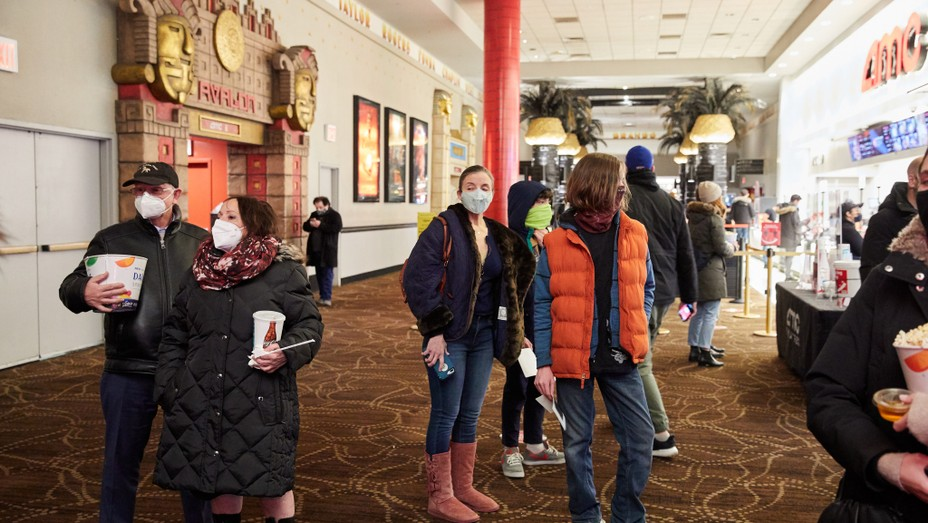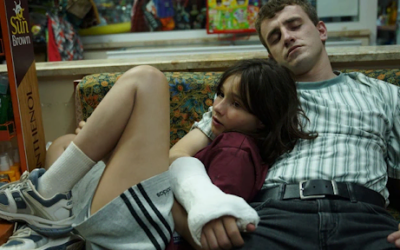Source: The Hollywood Reporter
The recent reopening of New York City’s movie theaters last weekend has been seen by many as a major win for the film industry. After being closed for nearly a year when the COVID-19 pandemic began to sweep the nation, the city finally permitted several of its theaters to resume operations, albeit under strict COVID-prevention guidelines, enabling the nation’s second largest moviegoing market to open for business once again. Even with these mandates, the addition of New York City ticket sales has clearly had a positive effect on the industry alone. Between March 5th and March 7th, domestic movie theaters earned a total of $25 million in total ticket revenue. While a disappointing number under normal conditions, this amount is the highest the industry has received in a single weekend since theaters were forced to shut down nearly a year ago. There’s little doubt that the reopening of New York’s theaters played a huge role in reaching this total, and analysts are predicting even higher numbers in the near future.
One major factor playing into these predictions is the reopening of movie theaters in Los Angeles and its neighboring regions, the only American moviegoing market in the nation larger than New York City. Though no announcement has been made by California governor Gavin Newsom regarding when movie theaters specifically may be allowed to return to operation, several sources claim that many counties are on the verge of moving from the Purple Tier of COVID restrictions to the Red Tier, which would allow several businesses, including movie theaters, to reopen under certain conditions. Credibility of these claims only became stronger when the California state government announced that major theme parks like Disneyland and Universal Studios could reopen starting April 1st if their respective counties had reentered the Red Tier, a declaration that resulted in much speculation that Los Angeles and Orange Counties were indeed on the verge of exiting the Purple Tier and getting closer to the Red Tier. Should they do so, then a significant handful of businesses in these counties, could open for businesses in a matter of weeks, if not days, after getting to go-ahead from the state and local governments.
None of this is to say that full box office recovery will arrive immediately. In fact, with maximum capacity limits being enforced for the time being, it’s highly unlikely that box office sales will go quite as high as they did before the start of the pandemic. Even with some films being pushed up on the release schedule (Paramount’s “A Quiet Place 2”, for example, was recently bumped up to come out this coming Memorial Day weekend), most studios are still keeping their most lucrative productions from coming out until much later in the year. Universal, for instance, has even pushed back its animated family film, “Minions: The Rise of Gru”, by another whole year, now planning to release it in the summer of 2022 (nearly two years after its original pre-pandemic release date). In spite of all this though, most studios have expressed great joy with the results of this most recent weekend box office, and are slowly making preparations for a return to business as normal.
With all that being said, there are still some challenges that movie theaters will have to contend with even after the pandemic draws to a close. With the rise of streaming services over the past few years (and them becoming one of the few reliable sources of entertainment throughout the previous year), most of this year’s biggest releases will likely lose a significant amount of ticket sale revenue due to the number of people that will instead choose to watch the film from the comfort of their own via a streaming platform like Disney+ or HBO Max. Some of these films will only require a simple monthly fee for a customer to receive access to a newly released film, such as those that Warner Brothers is releasing simultaneously in theaters and on its service HBO Max (the most recent being the live-action/animation hybrid “Tom and Jerry”). Other films, like the animated fantasy “Raya and the Last Dragon”, also released in theaters and on the Disney+ streaming platform, will have their own price tag to be charged on top of the monthly fee already being paid. Whatever the case may be, it’s still less money going to theaters as opposed to films that are only being exhibited theatrically.
There’s also the matter of the theatrical window, which has been dramatically shortened in recent months for several major studios. Universal was the first to take this approach, making a deal with several theater chains to allow their films to play at their locations for a minimum of seventeen days before they could then be made accessible through premium video on demand. More recently though, Paramount announced that it would allow its films to play in theaters for around forty-five days before then making them accessible through its own service Paramount+, which had made its debut earlier this month. While these arrangements may still allow theaters to earn money off these films in the first few weeks of their release, they’re still likely to lose a noticeable amount of revenue than they would have under the previous theatrical window deal.
The recent performance of “Raya and the Last Dragon” over its opening weekend shows signs of how conflicting these kinds of arrangements are at the moment. While the film did premiere at #1 at the box office, its total gross was a bit lower than expected, earning much less than what last weekend’s #1 film, “Tom and Jerry” had received. While many reasons have been given to explain this underperformance, many are citing Disney’s inability to reach an agreement with theater chain Cinemark as a major factor, causing the chain to abstain from showing the film altogether. Depending on how much the film is revealed to have earned from streaming sales, this could have a major impact on how Disney chooses to release its next batch of films.
Movie theaters may not yet be out of the woods when it comes to overcoming the toll taken by the pandemic, and with how much the media landscape has changed over the past year, it may never see the same success it had prior to the previous year. Still, in spite of all the challenges that remain, recovery is still in sights to a certain degree, and for the time being, they’ll likely be content with just that.




